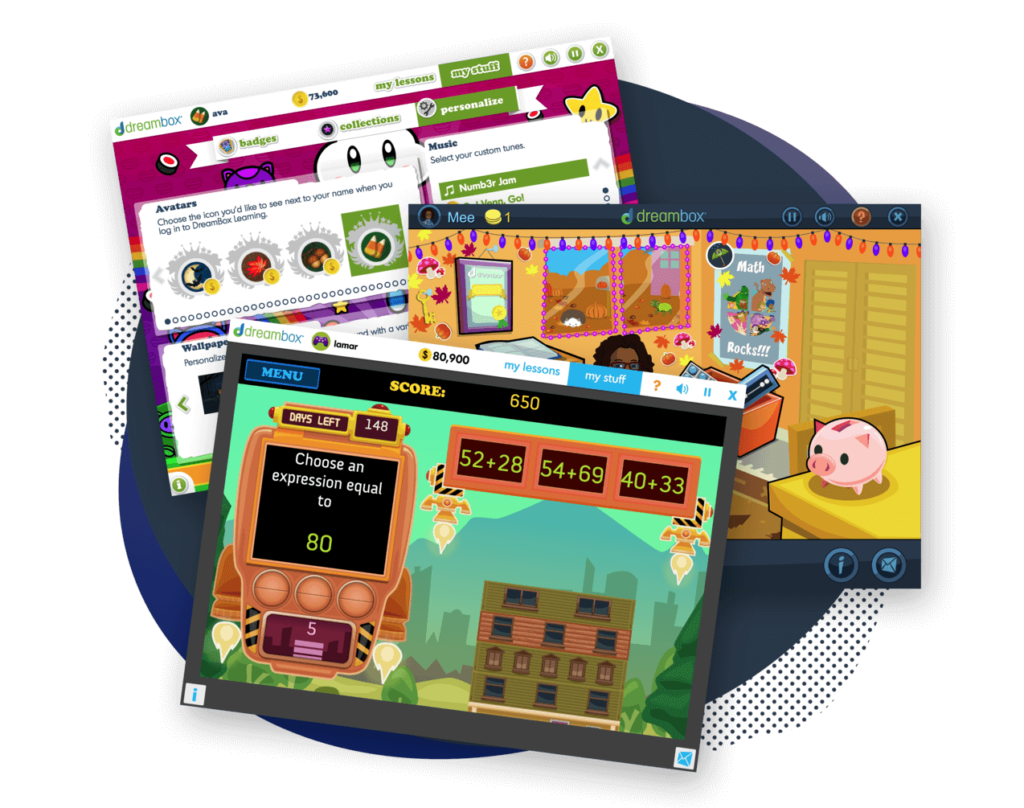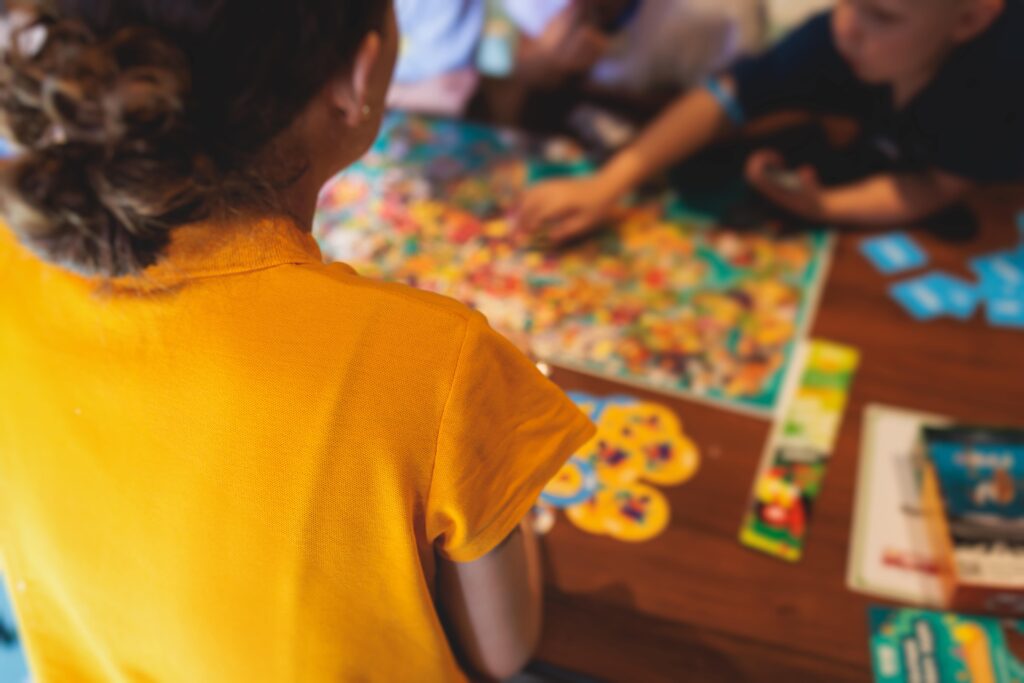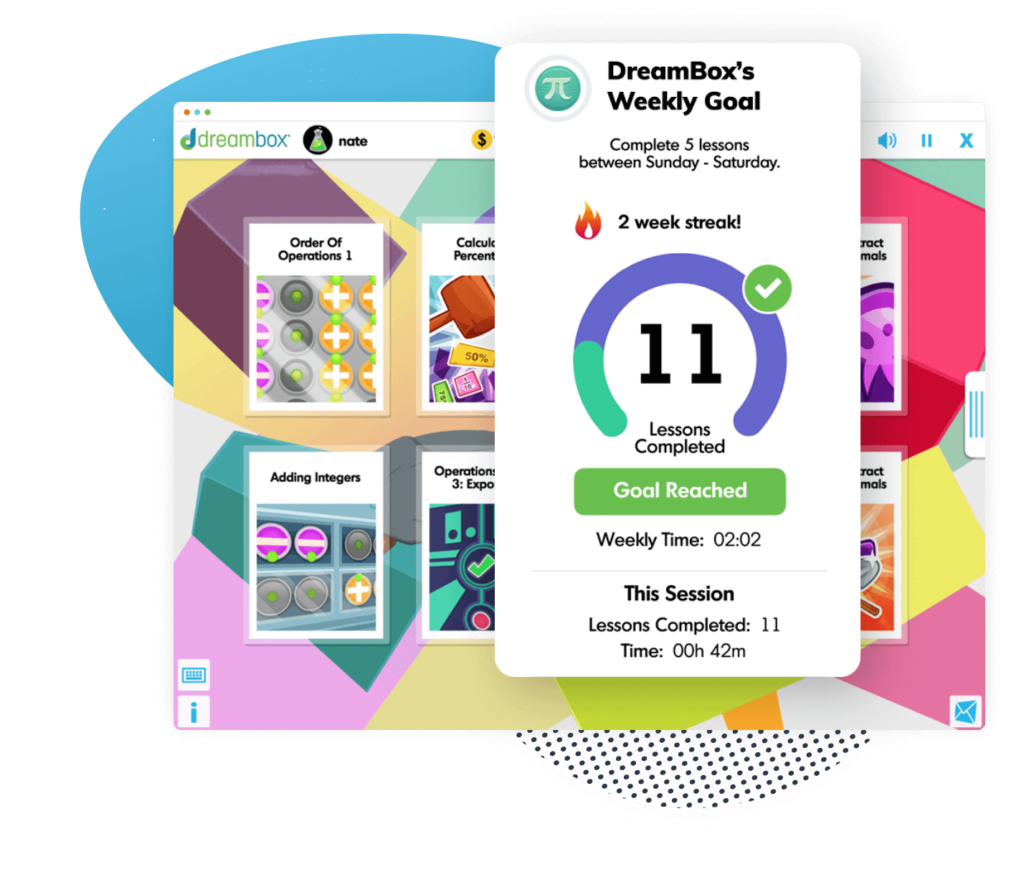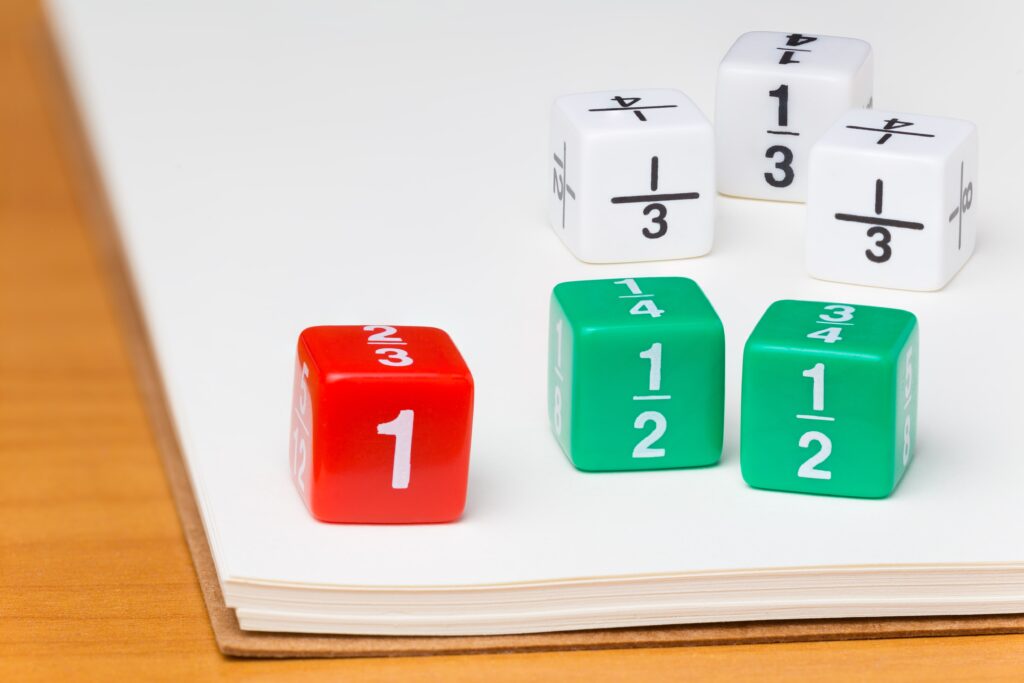30 Fun Math Activities for Kids
Who says math has to be boring? Make learning fun with these math activities perfect for toddlers to tweens!

Author
Katie Wickliff
Published:
September 2025
Key takeaways
- • Math activities help kids retain information better than rote memorization
- • Students today learn how to think critically, problem solve, and use math in daily life
- • Children of all ages benefit from purposeful math activities
For many years, math education relied heavily on rote memorization—the process of learning information through repetition rather than understanding. Students repeated facts and formulas until they could recall them automatically, even if they didn’t fully grasp the underlying concepts.
In the past several years, however, math education has shifted toward conceptual understanding. While some rote memorization (like fact fluency) plays a role, students today spend much more time learning to think critically, problem solve, and apply math to everyday situations. Math activities aren’t just fun; they help students practice these important skills and become confident mathematicians. In this guide, we’ll explore why math activities are so effective and share a list of 30 fun skill-building activities for a wide variety of learners from ages 2 to 11.
Why Math Activities Work
Math activities work because they make learning hands-on, meaningful, and fun. Moving beyond rote memorization allows kids to learn how to think critically and flexibly while developing the problem solving skills they need for success in the classroom and beyond. Studies have also shown that children retain more concepts when they interact physically with math materials rather than just listening or seeing. Math activities show kids that learning math can be an enjoyable experience.
10 Math Activities for Toddlers and Preschoolers (Ages 2–5)
- Counting with Fun Objects: Although true counting (one-to-one correspondence) usually develops around age 3 or 4, the youngest children still benefit from counting activities. Simply count everything you see– fingers, toes, or their favorite snacks. This way, counting becomes a playful part of daily life.
- Playdough Fun: Working with playdough is a fun tactile activity that strengthens fine motor skills. For toddlers and preschoolers, you can roll balls of playdough to count, sort by color, or compare quantities.
- Reading about Math: Sharing books with your child is a great way to bring math concepts to life. Picture books that toddlers and preschoolers love include: “My Very First Book of Numbers,” “Corduroy’s Numbers,” or “Chicka Chicka 1, 2, 3”
- Size Sorting: Gather a mix of objects like blocks, balls, cups, or stuffed animals, and have children sort the items into two piles: big and small. As they sort, introduce words like bigger, smaller, longer, shorter. This quick activity helps toddlers and preschoolers develop early math skills like comparing, classifying, and describing size.
- Grouping by Color: Similar to size sorting, but by color. Gather a mix of objects in a rainbow of colors. Have students sort the objects by color, naming the color as they go. Be sure to use objects with one bright, easily identifiable color.
- Sing Counting Songs: There are so many silly counting songs for toddlers and preschoolers! Some classic favorites include: “Ten in a Bed,” “One, Two, Buckle My Shoe,” or “Five Little Ducks.”
- Puzzle Play: Give toddlers or preschoolers a simple, colorful puzzle and demonstrate how to match pieces to the correct spots. Puzzles are a great way to develop early math skills and hand-eye coordination while having fun.
- Manipulative Addition/Subtraction Grab Bags: For this game, place two small paper bags on a table and fill them with manipulatives like candies, LEGO bricks, or math cubes. Kids grab a handful from each bag, count, then add the totals. Adjust difficulty by limiting objects to ten per bag at first, then increasing as their skills grow.
- Patterns: Give toddlers or preschoolers flat objects like colored buttons, a glue stick, and a piece of construction paper. Demonstrate a simple ABAB pattern, such as blue green blue green, and have them continue it, gluing the objects down as they go. This activity helps children recognize and create patterns while strengthening fine motor skills.
- Nature Walk: Create a scavenger hunt where children must find a certain number of items found in nature, such as six leaves, four acorns, or three stones. Kids can collect items found on the ground, but teach them not to disrupt nature by pulling items off trees or out of the ground!

Table of contents
Access more math practice with DreamBox
Turn math into playtime with DreamBox Math
DREAMBOX MATH
Get started for FREE today!

10 Math Activities for Elementary School (Ages 6–11)
- Pi Day Challenge: Give each student a paper plate to decorate like a pie. Around the edge, have them write the digits of pi (3.14159…) and color their favorite type of pie in the center. For an extra challenge, measure circular objects in the room to explore how pi connects to circles.
- Math Twister: Practice math facts with this fun “twist” on Twister! Create a list of math problems and write their answers on sticky notes, then place them on the mat. Call out a problem, such as “Foot on 7 x 3,” and kids must find the correct answer—21—and place their foot on it.. The student who keeps their balance the longest wins.
- Online Games: Many kids love extra screen time, and educational games are a great way to show them that learning can be fun! Research shows gamified learning boosts motivation, and Dreambox Math offers personalized, interactive games to keep kids excited about math!
- Candy Division Sort: Candy Division Sort is a “delicious” way to practice basic division skills. If you don’t want to (or can’t) use candy, any small objects work just as well! Each student gets an equal pile of candies. Then, read a real-world division problem like “You have 12 bracelets and want to share them equally among 6 friends. How many bracelets does each friend get?” Students use their candy pieces to solve the problem.
- Math Board Games: Math board games turn learning into an interactive experience. You can find board games for almost every math concept, like addition, subtraction, geometry, patterns, money, and more. Our favorites are Sum Swamp, ADSUMUDI, and Proof.

- Place Value Uno: Pair students up and have them sit facing each other, with half the UNO deck in front of them. To begin, each player turns over a card from their pile, placing that card in the highest place value spot. Players then flip over a second card and put it in the next place value spot, and so on. The player with the highest number keeps all the cards for that round.
- Multiplication Relay Race: Write multiplication equations on one set of cards and answers on another. Place the equation cards face down at the starting line and spread the product cards face up at the turnaround point. When you say “Go!”, the first player grabs a card, runs to find the matching product, then returns and sits. The first team to match all equations correctly and sit down wins.
- Math Books: Reading math books isn’t just for the youngest kids! Many illustrated picture books are geared toward elementary students. A few of our favorites include: “Blockhead: The Life of Fibonacci” by Joseph D’Agnese, “The Boy Who Loved Math” by Deborah Heiligman, or “Ten on a Twig” by Lo Cole.
- Swat the ‘fly’: Write numbers on cards or sticky notes and spread them out on a table. Call out a problem, like “6 + 4” or “7 x 3,” and kids race to swat the correct answer with a fly swatter. This fast-paced game makes practicing math facts an active way to build speed and accuracy.
- Shape Scavenger Hunt: Create a list or a worksheet based on geometric concepts students are learning, challenging the students to find each shape on their list. For an added challenge, set a timer to see how many shapes they can find within a certain time limit, or ask them to note how many faces, angles, and sides each shape has.

The math program that drives results
Get started today!
DreamBox adapts to your child’s level and learning needs, ensuring they are appropriately challenged and get confidence-building wins.
10 Easy No-Prep Math Activities for Busy Days
- Fraction Dice: Use two different colored dice, one for the numerator and one for the denominator. Roll the dice to create a fraction—for example, a 4 and a 6 make 4/6. Students take turns rolling and recording their fractions, and depending on their level, they can also simplify or convert improper fractions to mixed numbers.

- Multiplication Battle: This game is played in pairs with each player facing their partner. Shuffle and split the cards evenly. Players take turns flipping two cards, reading the multiplication sentence aloud, and the higher product wins the round. In a tie, split the cards or play “war.” The player with the most cards at the end wins.
- Circle Counting: Sit in a circle and take turns counting aloud, with each child saying the next number. Depending on your learners, you can start simply and make it more challenging by skip counting, counting backwards, or counting multiples.
- Guess the Number: Think of a number and give students written or verbal clues, such as “the number is greater than 13 but less than 27,” or “the number can be divided in half evenly.” Students guess until they find the mystery number.
- How Many? Fill a large mason jar with colorful candies. Ask students to examine the jar one by one and write down their estimate on a slip of paper with their name. Then, count together to check– the winner keeps the jar (or just a few pieces of candy)! This game can be played over several days to give each child an equal amount of time to examine the jar.
- Ants Go Marching: This classic song is a favorite among younger children. Play the song on your phone or computer, and invite the kids to sing along! If time allows, kids can draw pictures of ants and trade with a partner to count how many.
- Math Tic-Tac-Toe: To play, draw a 3×3 grid and fill each square with a math question that practices classroom concepts. Students take turns answering questions, and the first to connect three Xs or Os by answering correctly wins.
- Simon Says Math: Play classic Simon Says, but with a math twist. Ask different questions, like “Simon Says march 3×6 times!” or “Simon says hop 5×2+1 times!” Make it as simple or as challenging as you want!
- Number coloring pages: There are plenty of free coloring pages on the internet. A classroom favorite is a color-by-number where students follow the guide to solve math problems and find the corresponding number on the color key–here’s an example.
- Thirteen: Any number of students can play, from 2 partners to an entire class standing in a circle. The first player starts counting at 1 and can say 1, 2, or 3 numbers. Each player following can choose to say 1, 2, or 3 numbers. Whoever has to say 13 is out.
FAQs about Math Activities
Math activities are interactive games or challenges that encourage children to practice math concepts through hands-on learning, making math more enjoyable and easier to understand.
Take at home math practice to the next level
Empowering parents and educators to make math practice more impactful. Plus, your kids will love it.
